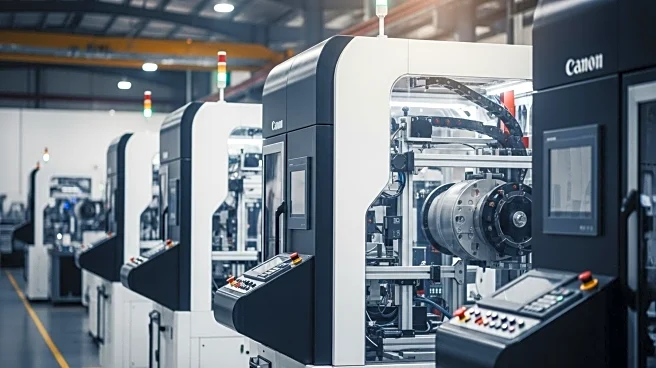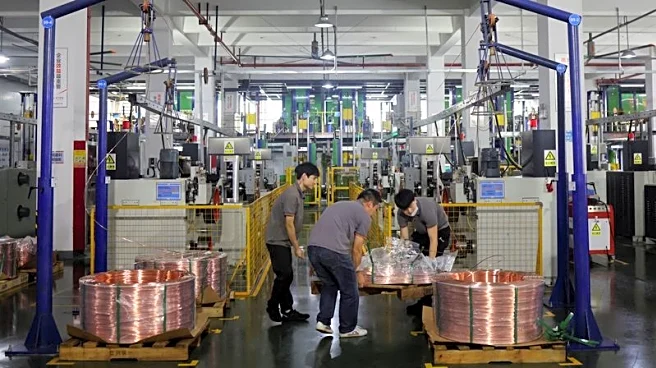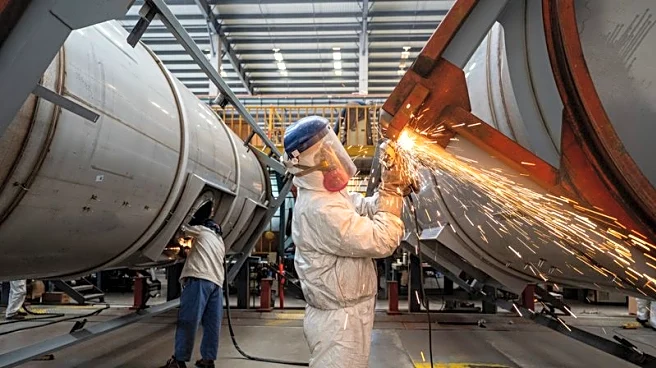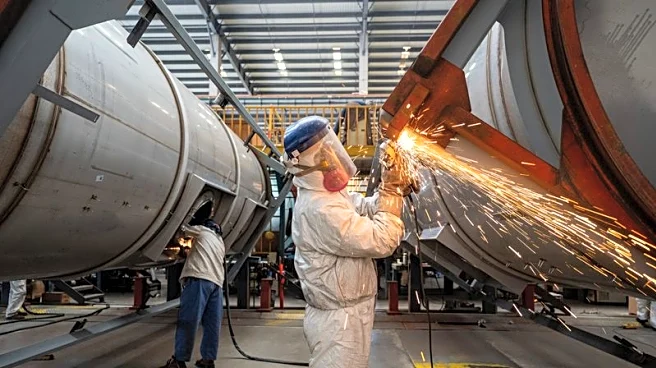What is the story about?
What's Happening?
China's official gauge for manufacturing activity indicated a smaller-than-expected contraction in September, as the government intensified efforts to address industrial overcapacity amidst sluggish domestic demand and global trade disruptions. The Manufacturing Purchasing Managers' Index (PMI) registered at 49.8, slightly above the anticipated 49.6, according to data from the National Bureau of Statistics. Although still below the 50-mark that separates growth from contraction, this reading is the strongest since March. The sub-index for production rose to a six-month high of 51.9, while new orders increased to 49.7. The improvement was driven by manufacturing in equipment, high-tech, and consumer goods sectors. A private survey by RatingDog showed a PMI of 51.2, surpassing forecasts and marking the highest level since May.
Why It's Important?
The improvement in China's manufacturing activity, despite remaining in contraction, is significant for global markets, including the U.S., as it suggests potential stabilization in one of the world's largest economies. This development could influence global supply chains and trade dynamics, particularly in sectors reliant on Chinese manufacturing. U.S. businesses and consumers might experience changes in import costs and availability of goods, impacting pricing strategies and consumer spending. Additionally, the efforts to curb industrial overcapacity may lead to shifts in global manufacturing competitiveness, affecting U.S. manufacturers and exporters.
What's Next?
China's continued efforts to address industrial overcapacity and stimulate domestic demand may lead to further improvements in manufacturing activity. Stakeholders, including U.S. businesses and policymakers, will likely monitor these developments closely, as they could impact trade relations and economic strategies. Potential reactions from global markets may include adjustments in investment strategies and supply chain management to accommodate changes in Chinese manufacturing output.
Beyond the Headlines
The ongoing adjustments in China's manufacturing sector highlight broader economic challenges, including balancing domestic demand with export pressures. These efforts may have long-term implications for global trade policies and economic partnerships, particularly with the U.S. The focus on high-tech and consumer goods manufacturing could signal a strategic shift towards more sustainable and innovative production practices, influencing global industry standards.
AI Generated Content
Do you find this article useful?














